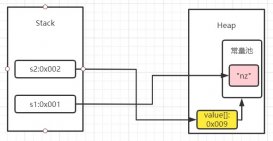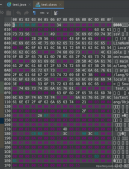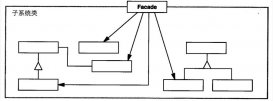SpringBoot在annotation的层面实现了数据缓存的功能,基于Spring的AOP技术。所有的缓存配置只是在annotation层面配置,像声明式事务一样。
Spring定义了CacheManager和Cache接口统一不同的缓存技术。其中CacheManager是Spring提供的各种缓存技术的抽象接口。而Cache接口包含缓存的各种操作。
CacheManger
针对不同的缓存技术,需要实现不同的cacheManager,Spring定义了如下的cacheManger实现。
| CacheManger | 描述 |
|---|---|
| SimpleCacheManager | 使用简单的Collection来存储缓存,主要用于测试 |
| ConcurrentMapCacheManager | 使用ConcurrentMap作为缓存技术(默认) |
| NoOpCacheManager | 测试用 |
| EhCacheCacheManager | 使用EhCache作为缓存技术,以前在hibernate的时候经常用 |
| GuavaCacheManager | 使用google guava的GuavaCache作为缓存技术 |
| HazelcastCacheManager | 使用Hazelcast作为缓存技术 |
| JCacheCacheManager | 使用JCache标准的实现作为缓存技术,如Apache Commons JCS |
| RedisCacheManager | 使用Redis作为缓存技术 |
常规的SpringBoot已经为我们自动配置了EhCache、Collection、Guava、ConcurrentMap等缓存,默认使用ConcurrentMapCacheManager。SpringBoot的application.properties配置文件,使用spring.cache前缀的属性进行配置。
application配置
|
1
2
3
4
5
6
|
spring.cache.type=#缓存的技术类型spring.cache.cache-names=应用程序启动创建缓存的名称spring.cache.ehcache.config=ehcache的配置文件位置spring.cache.infinispan.config=infinispan的配置文件位置spring.cache.jcache.config=jcache配置文件位置spring.cache.jcache.provider=当多个jcache实现类时,指定选择jcache的实现类 |
入口类配置
加入注解 @EnableCaching
缓存注解
| 注解 | 描述 |
|---|---|
| @Cacheable | 在调用方法之前,首先应该在缓存中查找方法的返回值,如果这个值能够找到,就会返回缓存的值。否则,这个方法就会被调用,返回值会放到缓存之中。 |
| @CachePut | 将方法的返回值放到缓存中。在方法的调用前并不会检查缓存,方法始终都会被调用。 |
| @CacheEvict | 在缓存中清除一个或多个条目。 |
| @Caching | 分组的注解,能够同时应用多个其他的缓存注解。 |
手动使用EhCache
在实际开发过程中,存在不使用注解,需要自己添加缓存的情况。下面就以Ehcache为例,简单写一下配置过程。
1. 添加依赖
引入springboot-cache和ehcache。需要注意,EhCache不需要配置version,SpringBoot的根pom已经集成了。
|
1
2
3
4
5
6
7
8
9
10
|
<!-- 缓存 --><dependency> <groupId>org.springframework.boot</groupId> <artifactId>spring-boot-starter-cache</artifactId></dependency><!-- ehcache --><dependency> <groupId>net.sf.ehcache</groupId> <artifactId>ehcache</artifactId></dependency> |
2. 入口类配置
加入注解 @EnableCaching
|
1
2
3
4
|
@SpringBootApplication@EnableCachingpublic class DemoApplication {} |
3. EhCache配置
在src\main\resources目录下,添加ehcache.xml文件,内容见文末。
4. application.application配置
|
1
2
3
4
|
# 配置ehcache缓存spring.cache.type=ehcache# 指定ehcache配置文件路径spring.cache.ehcache.config=classpath:/ehcache.xml |
5. 使用Cache
注入SpringBoot自动配置的bean,org.springframework.cache.CacheManager。
一个简单的测试类:
|
1
2
3
4
5
6
7
8
9
10
11
12
13
14
15
16
17
18
19
20
21
22
23
24
25
26
27
28
29
30
31
32
|
package com.bbf.frame.test;import com.bbf.frame.Application;import org.apache.commons.lang3.StringUtils;import org.junit.Test;import org.junit.runner.RunWith;import org.springframework.boot.test.context.SpringBootTest;import org.springframework.cache.Cache;import org.springframework.cache.CacheManager;import org.springframework.test.context.junit4.SpringJUnit4ClassRunner;import org.springframework.test.context.web.WebAppConfiguration;import javax.annotation.Resource;@RunWith(SpringJUnit4ClassRunner.class)@WebAppConfiguration@SpringBootTest(classes = Application.class, webEnvironment = SpringBootTest.WebEnvironment.MOCK)public class TestCache { @Resource private CacheManager cacheManager; @Test public void cacheTest() { // 显示所有的Cache空间 System.out.println(StringUtils.join(cacheManager.getCacheNames(), ",")); Cache cache = cacheManager.getCache("userCache"); cache.put("key", "123"); System.out.println("缓存成功"); String res = cache.get("key", String.class); System.out.println(res); }} |
附录 EhCache.xml
|
1
2
3
4
5
6
7
8
9
10
11
12
13
14
15
16
17
18
19
20
21
22
23
24
25
26
27
28
29
30
31
32
33
34
35
36
37
38
39
40
41
42
43
44
45
46
47
48
49
50
51
52
53
54
|
<?xml version="1.0" encoding="UTF-8"?><ehcache xmlns:xsi = "http://www.w3.org/2001/XMLSchema-instance" xsi:noNamespaceSchemaLocation = "http://ehcache.org/ehcache.xsd" updateCheck = "false"> <!-- 指定一个文件目录,当EHCache把数据写到硬盘上时,将把数据写到这个文件目录下 --> <diskStore path = "java.io.tmpdir"/> <!-- 默认的管理策略 --> <defaultCache eternal = "false" maxElementsInMemory = "10000" overflowToDisk = "true" diskPersistent = "false" timeToIdleSeconds = "120" timeToLiveSeconds = "120" diskExpiryThreadIntervalSeconds = "120" memoryStoreEvictionPolicy = "LRU"/> <!-- 此缓存最多可以存活timeToLiveSeconds秒,如果期间超过timeToIdleSeconds秒未访问,缓存失效 --> <cache name = "userCache" eternal = "false" maxElementsInMemory = "100" overflowToDisk = "false" diskPersistent = "false" timeToIdleSeconds = "120" timeToLiveSeconds = "180" memoryStoreEvictionPolicy = "LRU"/> <!-- maxElementsInMemory 内存中最大缓存对象数,看着自己的heap大小来搞 --> <!-- eternal:true表示对象永不过期,此时会忽略timeToIdleSeconds和timeToLiveSeconds属性,默认为false --> <!-- maxElementsOnDisk:硬盘中最大缓存对象数,若是0表示无穷大 --> <!-- overflowToDisk:true表示当内存缓存的对象数目达到了maxElementsInMemory界限后, 会把溢出的对象写到硬盘缓存中。注意:如果缓存的对象要写入到硬盘中的话,则该对象必须实现了Serializable接口才行。--> <!-- diskSpoolBufferSizeMB:磁盘缓存区大小,默认为30MB。每个Cache都应该有自己的一个缓存区。--> <!-- diskPersistent:是否缓存虚拟机重启期数据 --> <!-- diskExpiryThreadIntervalSeconds:磁盘失效线程运行时间间隔,默认为120秒 --> <!-- timeToIdleSeconds: 设定允许对象处于空闲状态的最长时间,以秒为单位。当对象自从最近一次被访问后, 如果处于空闲状态的时间超过了timeToIdleSeconds属性值,这个对象就会过期, EHCache将把它从缓存中清空。只有当eternal属性为false,该属性才有效。如果该属性值为0, 则表示对象可以无限期地处于空闲状态 --> <!-- timeToLiveSeconds:设定对象允许存在于缓存中的最长时间,以秒为单位。当对象自从被存放到缓存中后, 如果处于缓存中的时间超过了 timeToLiveSeconds属性值,这个对象就会过期, EHCache将把它从缓存中清除。只有当eternal属性为false,该属性才有效。如果该属性值为0, 则表示对象可以无限期地存在于缓存中。timeToLiveSeconds必须大于timeToIdleSeconds属性,才有意义 --> <!-- memoryStoreEvictionPolicy:当达到maxElementsInMemory限制时, Ehcache将会根据指定的策略去清理内存。可选策略有:LRU(最近最少使用,默认策略)、 FIFO(先进先出)、LFU(最少访问次数)。--></ehcache> |
以上就是本文的全部内容,希望对大家的学习有所帮助,也希望大家多多支持服务器之家。
原文链接:https://segmentfault.com/a/1190000013269653

















